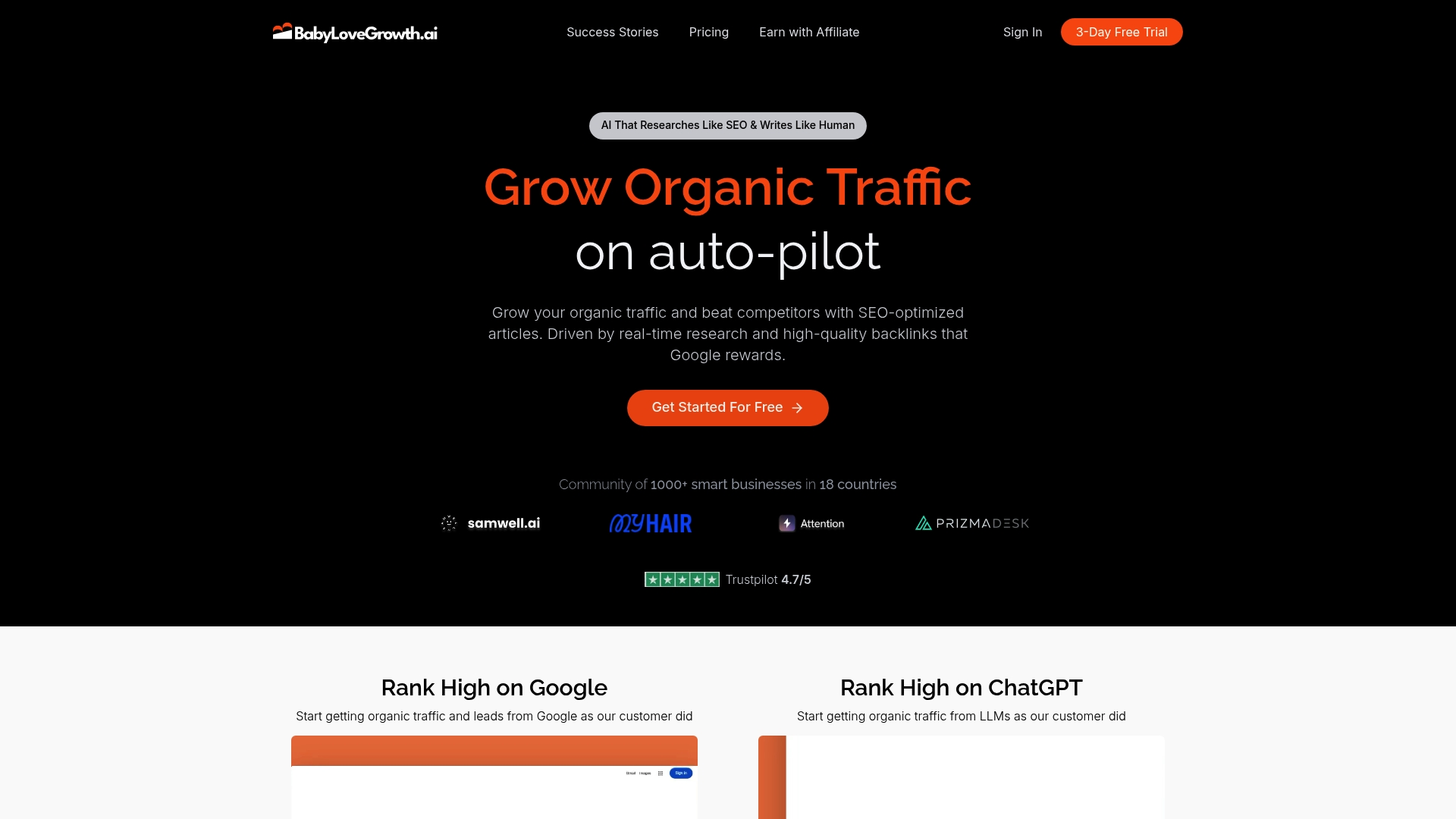Competitive Analysis in SEO: Strategies for 2025 Success


Every SEO strategist knows that outranking competitors drives growth and visibility. Still, a surprising number of businesses miss out on actionable insights even when over 70 percent of top-ranking sites outperform rivals thanks to advanced competitive analysis tools. Most people think competitive analysis is just about spying on keyword lists, but it is actually the roadmap to finding hidden gaps and shaping winning strategies for 2025.
Table of Contents
- Why Competitive Analysis In Seo Matters
- Essential Steps For Conducting An Seo Competitor Analysis
- Top Tools And Metrics For Effective Analysis
- Actionable Insights To Outperform Competitors
Quick Summary
| Takeaway | Explanation |
|---|---|
| Competitive Analysis is Essential | Conducting thorough competitive analysis is critical for understanding the digital landscape, uncovering hidden opportunities, and informing effective SEO strategies that drive business growth. |
| Identify Your True Competitors | Businesses should categorize competitors into direct business, search engine, and content competitors to develop a nuanced analysis approach and maximize content opportunities. |
| Utilize Advanced Tools and Metrics | Leveraging tools like Ahrefs and SEMrush, along with key metrics like domain authority and keyword ranking, helps businesses gain in-depth insights into competitors' strategies and performance. |
| Conduct Competitor Gap Analysis | Systematically evaluating where competitors excel reveals untapped opportunities, allowing businesses to target high-value keywords and enhance content quality and depth. |
| Adopt a Proactive Approach | Successful businesses treat competitive analysis as an ongoing process of continuous improvement, focusing on anticipating market shifts and creating innovative digital marketing strategies. |
Why Competitive Analysis in SEO Matters
Competitive analysis in SEO is not just a strategy but a critical survival mechanism in the digital marketing ecosystem. Understanding your competitors' online performance provides actionable insights that can transform your search engine optimization approach and drive significant business growth.

The Strategic Importance of Competitive Insights
Competitive analysis reveals more than just what other businesses are doing online. Research analyzing university website rankings demonstrates that specific SEO metrics like backlink quantity, domain authority, and page ranking directly impact digital visibility. By systematically examining competitors' strategies, businesses can uncover hidden opportunities and potential gaps in their own digital marketing approach.
Businesses that invest time in comprehensive competitive analysis gain a substantial advantage. Research on organizational SEO techniques indicates that low-cost strategies such as strategic keyword generation, targeted link exchanges, and directory submissions can significantly enhance search engine visibility and drive profitable outcomes.
Translating Competitive Intelligence into Action
Effective competitive analysis goes beyond simple observation. It requires a structured approach to gathering, analyzing, and implementing insights. This means examining not just what competitors rank for, but understanding the underlying strategies that enable their success. Key areas of focus include:- Content Strategy: Analyzing the type, depth, and quality of content competitors produce
- Keyword Targeting: Identifying high-value keywords competitors might have overlooked
- Backlink Profiles: Understanding the sources and quality of competitors' external links
The goal is not to copy competitors but to learn from their strengths and exploit their weaknesses. By developing a nuanced understanding of the competitive landscape, businesses can craft more sophisticated, targeted SEO strategies that differentiate them in crowded digital markets.
Building a Continuous Improvement Framework
Competitive analysis is not a one-time activity but an ongoing process of learning and adaptation. Search engine algorithms constantly evolve, and digital marketing strategies must remain equally dynamic. Successful organizations treat competitive analysis as a continuous improvement framework, regularly reassessing their position and refining their approach.
This iterative approach allows businesses to stay ahead of emerging trends, quickly respond to shifts in the digital marketing ecosystem, and maintain a competitive edge. By treating competitive analysis as a strategic tool rather than a periodic check-in, companies can transform their SEO efforts from reactive to proactive.
The complexity of modern SEO demands a sophisticated, data-driven approach. Competitive analysis provides the strategic intelligence necessary to navigate this intricate digital terrain, offering businesses a roadmap to improved online visibility and sustained digital growth.
Essential Steps for Conducting An SEO Competitor Analysis
Conducting an effective SEO competitor analysis requires a strategic and systematic approach. This process is not about mimicking competitors but understanding the digital ecosystem that drives search engine performance and identifying unique opportunities for growth.
Identifying Your True Competitive Landscape
The first critical step in competitive analysis is accurately defining your competitors. Many businesses make the mistake of focusing only on direct industry competitors. However, in the digital realm, your SEO competitors might be different from your traditional business competitors. Research from Search Engine Journal suggests that businesses should categorize competitors into three distinct types:
- Direct Business Competitors: Companies offering similar products or services
- Search Engine Competitors: Websites ranking for your target keywords
- Content Competitors: Websites creating content in your industry niche
Understanding these different competitor types allows for a more nuanced and comprehensive analysis approach. Each category provides unique insights into potential optimization strategies and content opportunities.
To clarify the different types of competitors you'll encounter in SEO, the following table summarizes their unique characteristics and roles in your analysis:
| Competitor Type | Description | Role in SEO Analysis |
|---|---|---|
| Direct Business Competitors | Companies with similar products/services | Benchmark for business strategy and branding |
| Search Engine Competitors | Sites ranking for your target keywords | Primary focus for keyword/content tactics |
| Content Competitors | Sites publishing content in your niche | Source of inspiration for content opportunities |
Advanced Competitor Keyword Research Techniques
Keyword research forms the backbone of competitive SEO analysis. A comprehensive study by Moz reveals that successful competitive analysis goes beyond simple keyword identification. The process involves:
- Mapping existing keyword rankings across competitors
- Identifying content gaps and unexplored keyword opportunities
- Analyzing keyword difficulty and search volume
- Understanding user intent behind specific search queries
Professional SEO strategists use sophisticated tools to perform deep keyword competitive analysis. These tools help uncover not just the keywords competitors rank for, but also the specific content strategies driving their search engine success.
Developing a Strategic Response Framework
After gathering comprehensive competitive intelligence, the final step is transforming insights into actionable strategies. This involves creating a structured response framework that addresses key competitive findings. Successful implementation requires:
- Prioritizing identified content and keyword opportunities
- Developing high-quality content that addresses user needs more comprehensively than competitor pages
- Building a robust backlink strategy informed by competitor link profiles
- Continuously monitoring and adapting your approach based on ongoing competitive shifts
Competitive analysis in SEO is not a one-time task but an ongoing strategic process. The digital marketing ecosystem evolves rapidly, and maintaining a dynamic, responsive approach ensures your SEO strategy remains effective and competitive. By systematically analyzing competitors, businesses can uncover hidden opportunities, refine their digital marketing approach, and steadily improve their search engine visibility.
Top Tools and Metrics for Effective Analysis
Navigating the complex world of SEO competitive analysis requires sophisticated tools and a strategic approach to measuring performance. Understanding which metrics matter and leveraging the right technological solutions can dramatically transform your digital marketing effectiveness.
Essential SEO Competitive Analysis Tools
Research from SEMrush highlights the critical role of comprehensive digital marketing platforms in conducting thorough competitive assessments. The most powerful tools offer multi-dimensional insights that go beyond surface-level data. Key platforms include:- Ahrefs: Renowned for its extensive backlink analysis capabilities
- SEMrush: Provides comprehensive keyword and competitive research features
- Moz Pro: Offers detailed domain authority and ranking insights
These tools enable businesses to dig deep into competitors' digital strategies, uncovering nuanced performance metrics that can inform strategic decision-making. Professional marketers recognize that choosing the right tool is not about finding a one-size-fits-all solution but selecting a platform that aligns with specific business objectives.
To help differentiate the leading SEO competitive analysis tools, here's a comparison chart summarizing their key strengths:
| Tool | Primary Focus | Notable Features |
|---|---|---|
| Ahrefs | Backlink analysis | Site Explorer, rank tracking, content explorer |
| SEMrush | Keyword & competitor research | Keyword Magic Tool, site audit, traffic analytics |
| Moz Pro | Domain authority & rankings | Link Explorer, keyword research, on-page grader |
Critical Metrics for Competitive SEO Performance

- Domain Authority
- Organic Search Traffic
- Keyword Ranking Positions
- Backlink Quality and Quantity
- Content Engagement Rates
Each metric provides a unique window into competitive performance. Domain authority reveals overall website strength, while organic search traffic demonstrates real-world visibility. Keyword ranking positions show precise search engine positioning, and backlink analysis unveils the underlying structural strength of a digital presence.
Strategic Implementation of Competitive Insights
Transforming raw data into actionable strategy requires more than just collecting metrics. Successful businesses develop a systematic approach to interpreting and responding to competitive intelligence. This means:
- Regularly updating competitive benchmarks
- Identifying emerging content and keyword opportunities
- Understanding gaps in current digital marketing approaches
- Developing responsive strategies that adapt to competitive shifts
The most effective competitive analysis transcends simple data collection. It requires a nuanced understanding of how different metrics interconnect and influence overall digital performance. By treating competitive analysis as a dynamic, ongoing process, businesses can create more resilient and adaptive digital marketing strategies.
Ultimately, the goal of using these tools and metrics is not to replicate competitors but to understand the digital ecosystem deeply enough to carve out unique strategic advantages. Sophisticated competitive analysis provides the strategic intelligence necessary to navigate the complex world of search engine optimization with confidence and precision.
Actionable Insights to Outperform Competitors
Transforming competitive analysis into tangible strategic advantages requires a nuanced approach that goes beyond simple data collection. Successful businesses develop sophisticated methods to convert competitive insights into actionable strategies that drive meaningful digital performance.
Mastering the Competitor Gap Analysis
Research from Walker Sands reveals that conducting a comprehensive competitor gap analysis is crucial for identifying untapped opportunities in your digital marketing strategy. This process involves systematically examining areas where competitors excel and your current approach falls short.The gap analysis process includes:
- Keyword Opportunity Mapping: Identifying high-value keywords your competitors rank for but your content does not target
- Content Depth Assessment: Analyzing the comprehensiveness of competitor content and finding ways to create more valuable resources
- Technical SEO Evaluation: Examining competitors' site structure, page speed, and technical optimization
By methodically identifying these gaps, businesses can develop targeted strategies that address specific competitive weaknesses and create unique value propositions.
Strategic Content Differentiation
Analysis from Adam Skills highlights the importance of creating content that goes beyond mere keyword targeting. Truly competitive content requires a multifaceted approach that combines:- Unique insights and original research
- In-depth analysis that provides more value than competitor content
- Multimedia elements that enhance user engagement
- Precise targeting of specific user intent
Successful content differentiation means understanding not just what competitors are doing, but identifying the underlying user needs they might be missing. This approach allows businesses to create content that stands out in crowded digital markets.
Developing a Proactive Competitive Strategy
Outperforming competitors requires more than reactive analysis. Businesses must develop a proactive approach that anticipates market shifts and creates innovative digital marketing strategies. This involves:
- Continuous monitoring of industry trends
- Rapid iteration of content and SEO approaches
- Investing in emerging content formats and technologies
- Building a flexible, adaptive digital marketing framework
The most successful organizations treat competitive analysis as a dynamic process of continuous improvement. Rather than simply copying competitor strategies, they use competitive insights to develop unique approaches that set them apart in the digital marketplace.
Ultimately, outperforming competitors is about more than just matching their performance. It requires a strategic mindset that seeks to create genuine value, anticipate user needs, and develop innovative approaches to digital marketing. By combining sophisticated analytical tools with creative strategic thinking, businesses can transform competitive insights into meaningful digital success.
Frequently Asked Questions
What is competitive analysis in SEO?
Competitive analysis in SEO involves examining competitors' strategies, including their keyword targeting, content quality, and backlink profiles, to uncover strengths and weaknesses that can inform your own SEO strategy.
Why is competitive analysis important for SEO success in 2025?
Competitive analysis is essential for SEO success in 2025 as it helps businesses identify gaps in their strategies, uncover hidden opportunities, and stay ahead of market trends, ultimately driving growth and visibility.
What tools should I use for SEO competitor analysis?
Essential tools for SEO competitor analysis include Ahrefs, SEMrush, and Moz Pro. These platforms provide insights into backlink profiles, keyword performance, and overall SEO metrics crucial for effective strategy development.
How can I conduct a competitor gap analysis?
To conduct a competitor gap analysis, identify high-value keywords your competitors rank for that you do not, assess the depth of their content, and evaluate their technical SEO performance. This helps pinpoint areas where you can improve and differentiate your strategy.
Ready to Turn Competitive Analysis Insights Into Real Growth?
Too often, businesses get stuck gathering endless data about their competitors but struggle to act on those insights. If you recognize the pressure of wanting actionable results instead of just reports, you're not alone. The article emphasized the need for sophisticated tools, competitor gap analysis, and continuous improvement. But knowing what your rivals are doing is only valuable if you can respond faster and smarter.

Let Babylovegrowth.ai help you bridge the gap between analysis and action. Our AI-driven platform takes the hidden opportunities you uncover and transforms them into ready-to-publish content and strategic backlinks, fully automated and optimized for 2025's SEO landscape. Stop spending hours manually tracking keywords and building competitor reports. Start scaling your organic growth through automated content plans, real-time research, and proven ranking methods.
Visit Babylovegrowth.ai to see how you can turn your next competitor analysis into a concrete growth advantage. See live demonstrations, explore our performance tracking features, and discover a smarter way to win. Take the next step to outperform your competitors right now.
Recommended
- BabyLoveGrowth | The #1 Ranked AI Writer for SEO
- BabyLoveGrowth | The #1 Ranked AI Writer for SEO
- BabyLoveGrowth: Keyword Gap Analysis Tool
- What Is Topical Authority in SEO? The Ultimate Guide to Boost Your Rankings
- The Ultimate Guide to SEO in 2025: How to Dominate in the Age of AI | 12AM Agency
- SEO AB Test Strategies for CRO Marketers in 2025
Smart SEO,
Faster Growth!
Most Read Articles

Generative Engine Optimization (GEO)
Learn how Generative Engine Optimization (GEO) helps your content rank in AI search engines like ChatGPT and Google AI. This comprehensive guide explains the differences between SEO and GEO, why it matters for your business, and practical steps to implement GEO strategies for better visibility in AI-generated responses.

Track LLM Traffic in Google Analytics 4 (GA4)
Learn how to track and analyze traffic from AI sources like ChatGPT, Claude, Perplexity, and Google Gemini in Google Analytics 4. This step-by-step guide shows you how to set up custom filters to monitor AI-driven traffic and make data-driven decisions for your content strategy.

How to Humanize AI Text with Instructions
Learn practical techniques to make AI-generated content sound more natural and human. This guide covers active voice, direct addressing, concise writing, and other proven strategies to transform robotic text into engaging content.

Open AI Revenue and Statistics (2024)
Comprehensive analysis of OpenAI financial performance, user engagement, and market position in 2023. Discover key statistics including $20B valuation, $1B projected revenue, and 100M+ monthly active users.